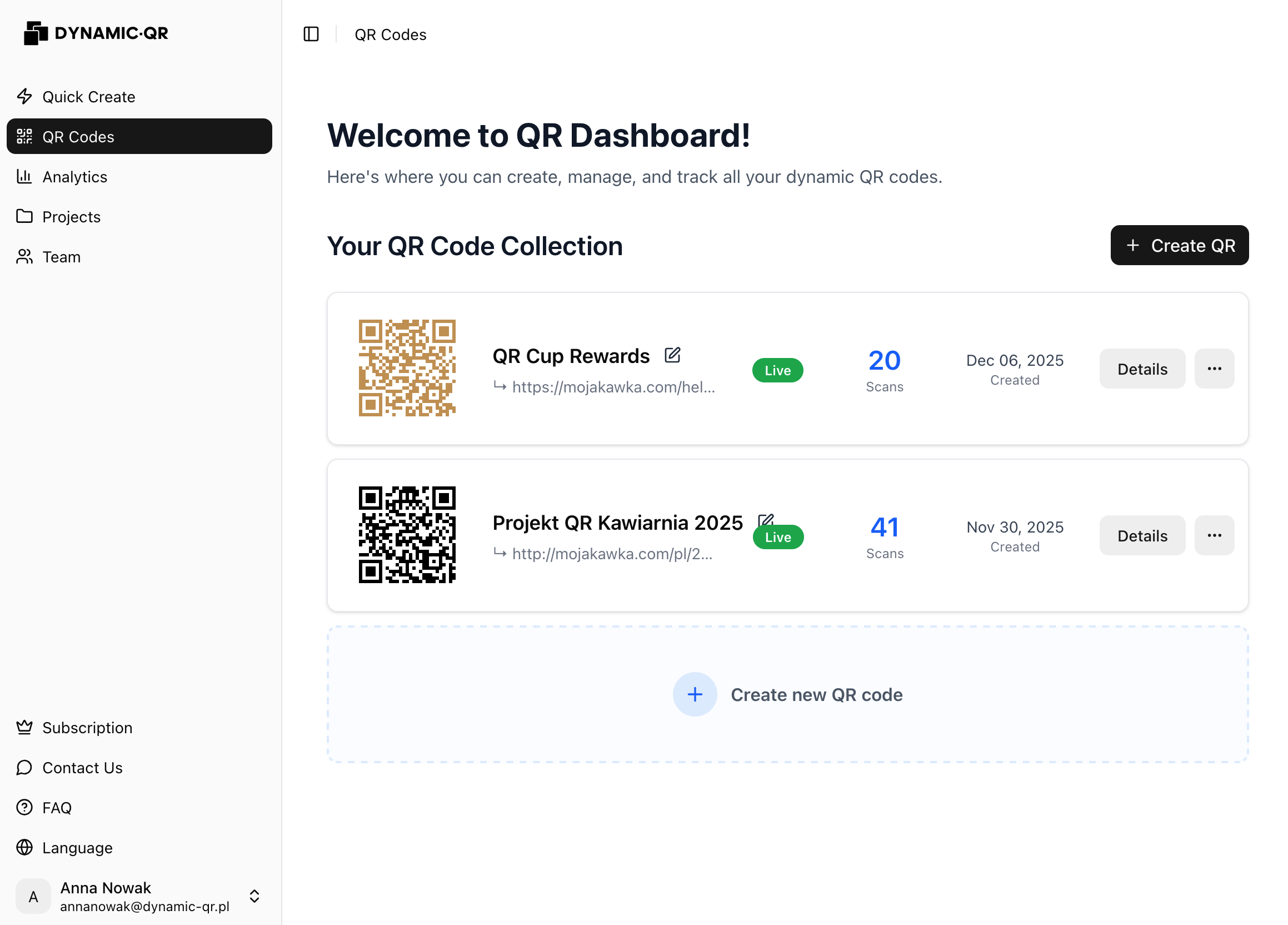
You have no idea. And that's the problem.
1. You can't change the link after printing — wrong URL? Promotion ended? Page moved? All materials go to trash
2. You don't know if anyone is scanning — zero stats, zero data. You spend your print budget with no idea if it's even working
3. You can't measure campaign results — which location works better? Flyers or posters? Without data, it's just guesswork
4. You can't optimize — your competition tests and improves, while you're shooting in the dark and hoping for luck
Track scans, change links anytime — without reprinting codes
A dynamic QR code points to a short link (e.g. qr.to/abc123) instead of directly to your website.
This allows us to track every scan — you see exactly when and where they come from. Safely and anonymously. You know which campaigns are working.
Need to change the destination link? Update it in 30 seconds — without reprinting.
Every scan is counted. You can change the link anytime.
Wrong link? Update it with one click. Your 2,000 printed QR codes start working immediately.
See exactly how many people scan each code. Show your boss real numbers, not guesses.
Name, tag, search, and manage hundreds of QR codes. No more chaos.
Create your first dynamic QR code and start tracking scans immediately
Click "Create QR code", name your campaign, and paste your destination URL. Choose a design style — or keep it simple.
Takes 30 seconds.
Need to change where the QR code points? Open the dashboard, click edit, paste the new URL. Done.
Your printed QR codes redirect to the new link instantly.

Download your QR code in high resolution. Print it on flyers, posters, packaging — anywhere you need it.
The QR code works immediately.
See exactly how many people scanned each QR code, when they scanned, and which campaigns perform best.
Real data. No more guessing.
For marketers and businesses that use QR codes in print campaigns
Unlock the full potential of your QR codes
first 7 days free
7 days free, then 100 zł/month + VAT
Need more than 100 QR codes? Contact us for custom pricing.
All plans include unlimited link edits and no hidden fees. Cancel anytime.